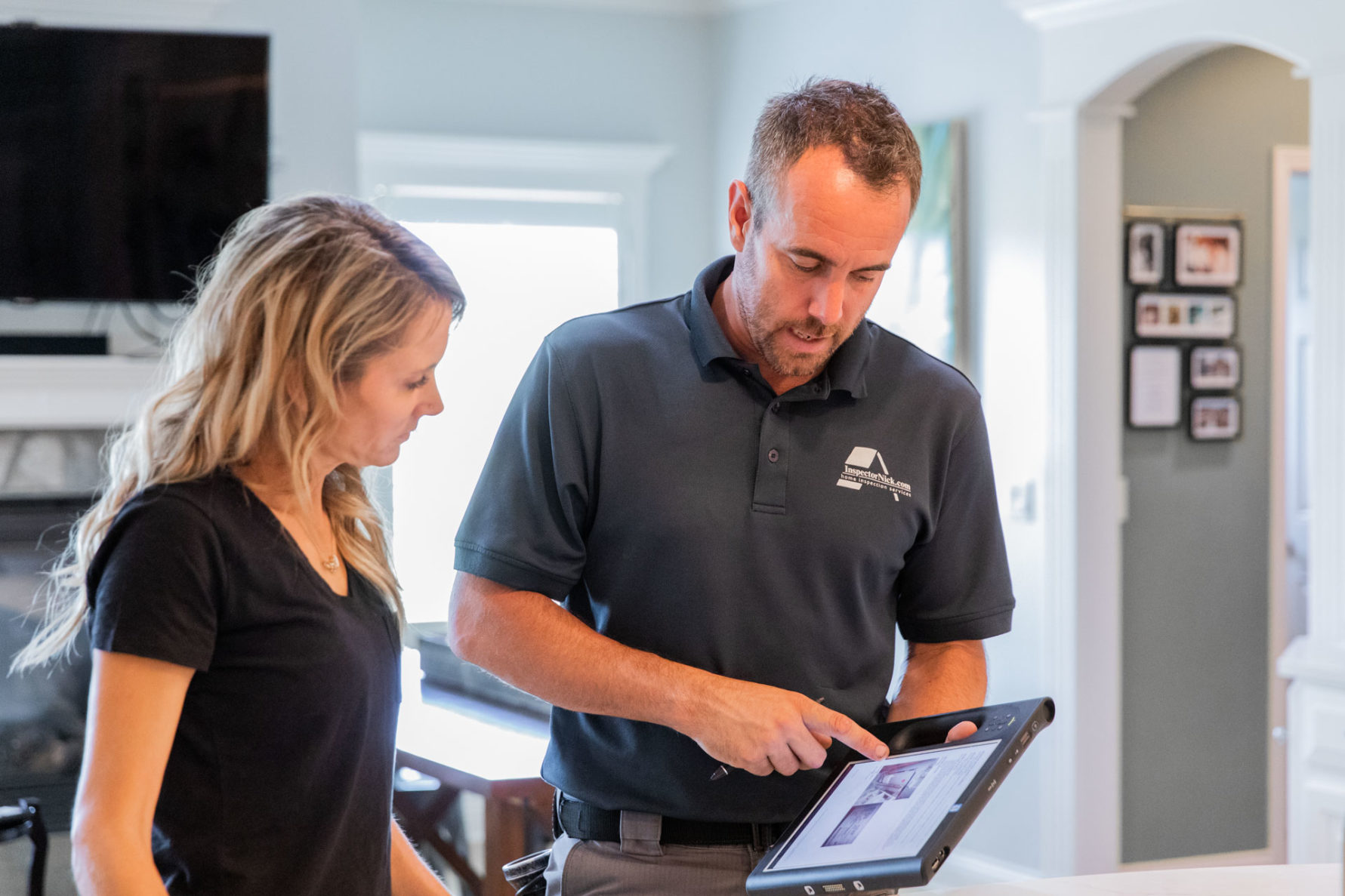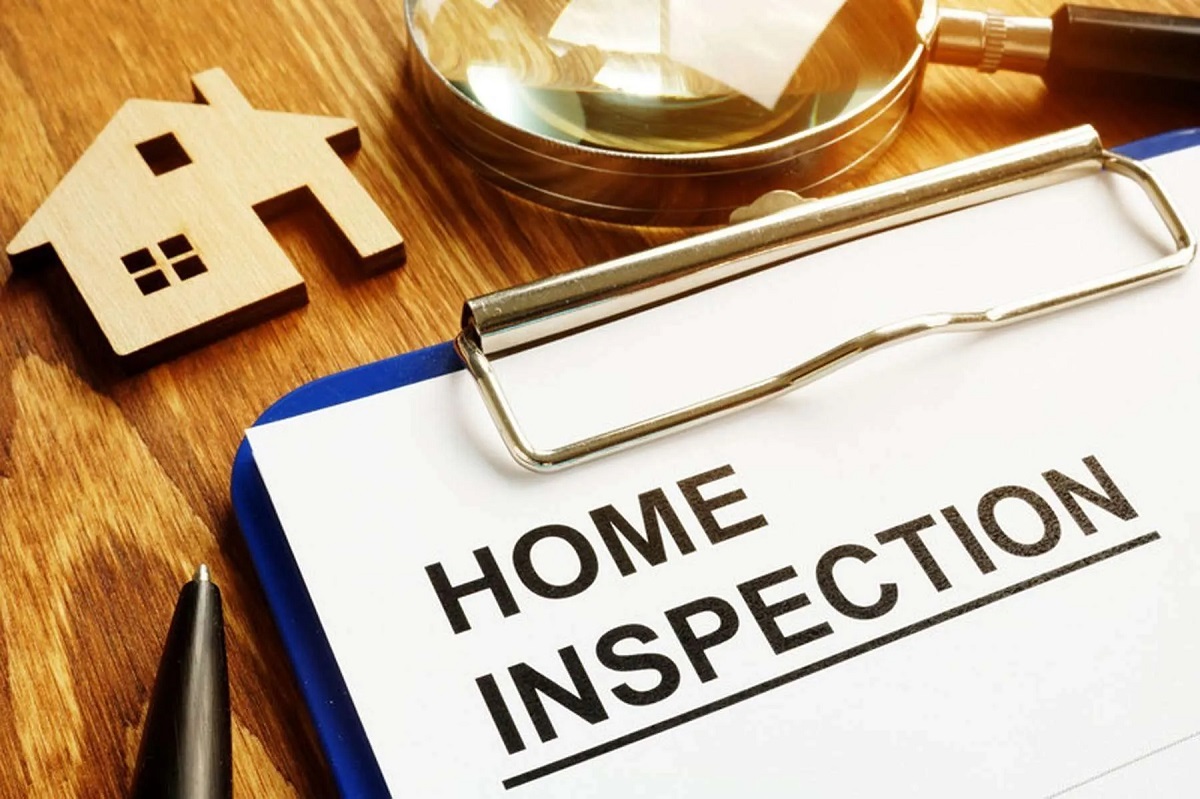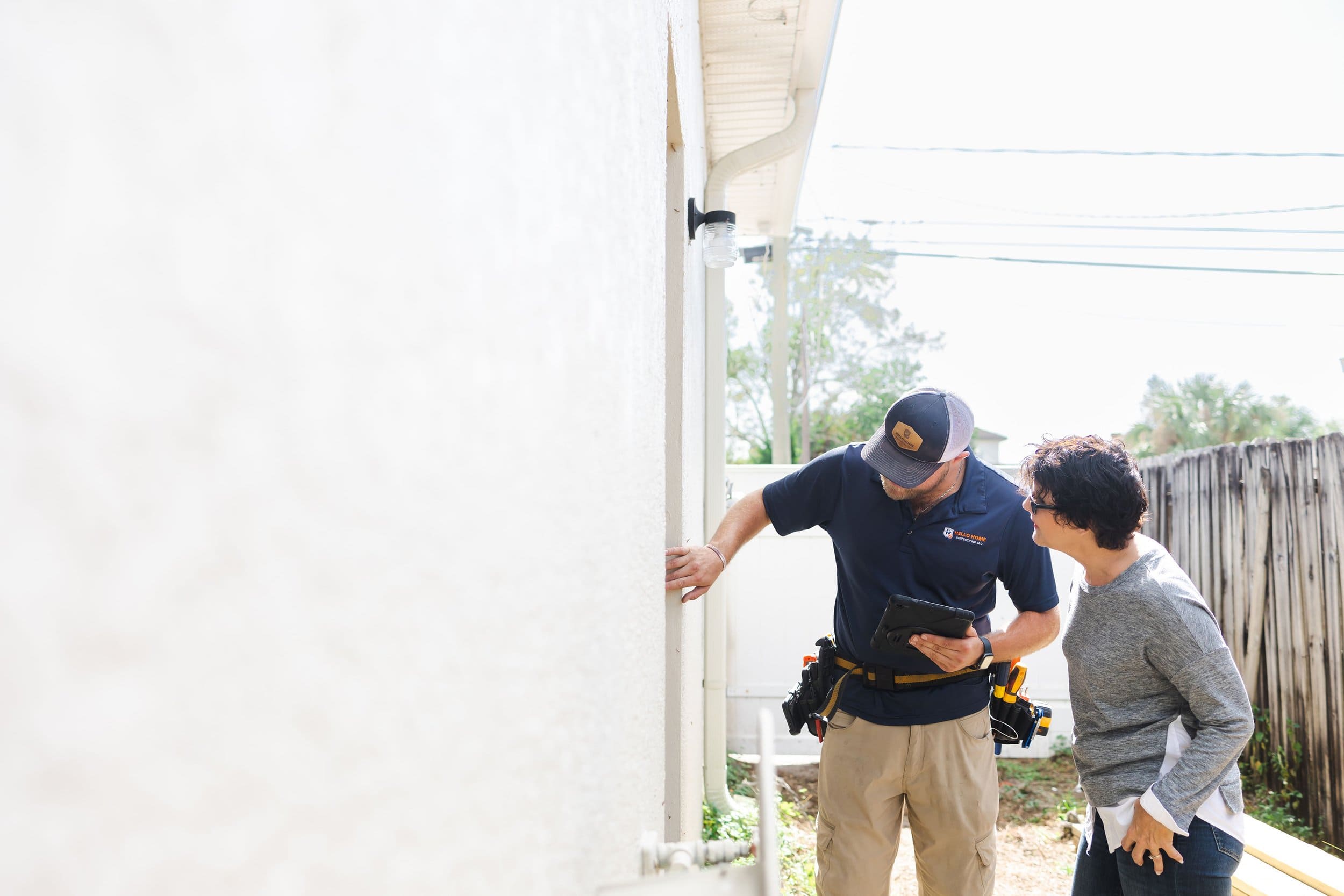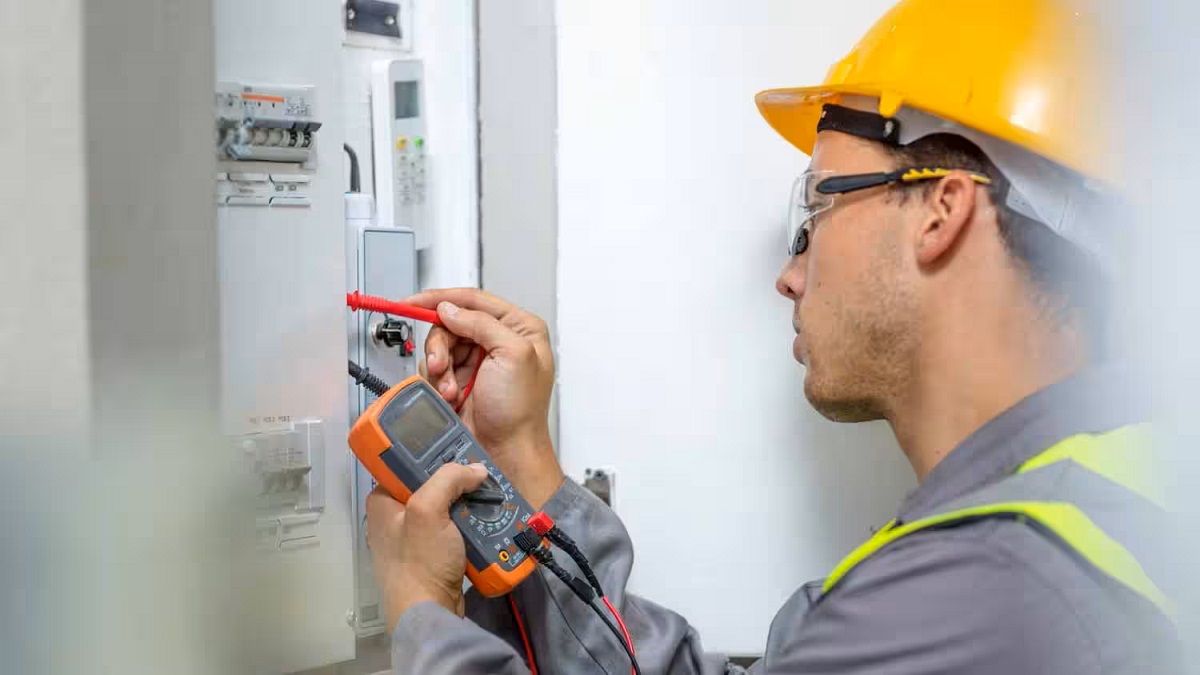Home>Home Maintenance>What Are Buyers’ Rights Regarding The Inspection Of Goods?


Home Maintenance
What Are Buyers’ Rights Regarding The Inspection Of Goods?
Modified: March 6, 2024
Discover buyers' rights for inspecting goods during the home maintenance process. Learn how to ensure a thorough inspection of products and protect your investment.
(Many of the links in this article redirect to a specific reviewed product. Your purchase of these products through affiliate links helps to generate commission for Storables.com, at no extra cost. Learn more)
Introduction
Welcome to the world of home maintenance and improvement! As a homeowner, it’s important to have a solid understanding of various aspects related to taking care of your property. One key area to focus on is the inspection of goods that are essential for the upkeep of your home.
When you purchase goods for your home, such as appliances, furniture, or even building materials, you have certain rights as a buyer. These rights, especially regarding the inspection of goods, ensure that you receive high-quality products that meet your expectations.
In this article, we will explore the rights buyers have when it comes to inspecting goods, the importance of a thorough inspection, the timeframe for conducting inspections, how to document issues or defects, and the remedies available to buyers in case of defective goods.
Whether you’re a first-time homeowner or an experienced property owner, understanding these rights is crucial for protecting your investment, ensuring the longevity of your home, and avoiding potential disputes with sellers or manufacturers.
So let’s dive in and explore the world of buyers’ rights regarding the inspection of goods!
Key Takeaways:
- When buying goods for your home, you have the right to inspect them for defects and damages. Thoroughly examining the products ensures you get high-quality items that meet your expectations.
- If you find any issues during the inspection, document them and promptly report them to the seller. Understanding your rights and legal protections as a buyer is crucial for a smooth purchasing experience.
Read more: What Is A Buyer’s Inspection Advisory?
Understanding Buyers’ Rights
When it comes to purchasing goods for your home, you have certain rights as a buyer. These rights are designed to protect you and ensure that you receive products that meet your expectations in terms of quality and functionality.
Buyers’ rights can vary depending on your jurisdiction and the specific laws that govern consumer protection. However, there are some fundamental principles that apply universally.
One of the most important rights buyers have is the right to inspect goods before accepting them. This means that you have the opportunity to thoroughly examine the product to ensure that it is free from defects and meets the specifications promised by the seller.
Buyers also have the right to receive accurate and truthful information about the goods they are purchasing. This includes details about the product’s features, performance, and any warranties or guarantees that may apply. Sellers are obligated to provide this information transparently and must not mislead or deceive buyers.
Furthermore, buyers have the right to fair pricing. This means that sellers cannot engage in price gouging or unfair pricing practices. The price you pay for a product should be reasonable and reflect its value and quality.
It’s important to note that buyers’ rights may have certain limitations, especially when it comes to second-hand goods or goods sold “as is.” In these cases, sellers must still provide accurate information about the condition of the goods, but the buyer’s recourse for defects or issues may be limited.
Understanding your rights as a buyer is essential for making informed purchasing decisions and protecting yourself from potential fraud, substandard products, or false advertising. It empowers you to ask the right questions, conduct thorough inspections, and take appropriate action when necessary.
Now that we have a grasp of buyers’ rights, let’s delve into the specific rights and procedures related to the inspection of goods.
The Right to Inspect Goods
When you purchase goods for your home, one of your fundamental rights as a buyer is the right to inspect those goods before accepting them. This right serves as a safeguard to ensure that you receive products that meet your expectations in terms of quality, functionality, and suitability for your needs.
Inspection allows you to thoroughly examine the goods to identify any defects, damages, or discrepancies. It provides an opportunity to ensure that the product matches the descriptions provided by the seller and meets your specific requirements.
Whether you’re buying appliances, furniture, home improvement materials, or any other goods related to maintaining your home, exercising your right to inspect is crucial. Here are a few key points to keep in mind:
- Visual Inspection: Start by visually examining the goods. Look for any visible damages, scratches, dents, or signs of wear and tear. Check for any missing parts or accessories that should be included with the product.
- Functional Testing: If applicable, test the product to make sure it functions properly. For example, if you’re purchasing a kitchen appliance, test its various features and settings to ensure that they work as intended.
- Check Specifications: Review the product’s specifications, such as size, dimensions, weight, or any technical details. Ensure that they match what was advertised or what you require for your home.
- Verify Warranties or Guarantees: If the product comes with a warranty or guarantee, read the terms and conditions carefully. Confirm the duration of coverage, what it encompasses, and any specific requirements for filing a claim.
During the inspection process, it is crucial to be thorough and meticulous. Take your time to assess the condition of the goods and ask questions if anything seems unclear or if you need further clarification from the seller.
If you notice any defects, damages, or discrepancies during the inspection, it is important to document them properly. This documentation will serve as evidence in case you need to address the issue with the seller or seek a remedy in the future. We’ll discuss more about documenting defects and issues later in this article.
Remember, your right to inspect goods is a crucial step in ensuring that you receive products of satisfactory quality. It empowers you as a buyer to make informed decisions and protects you from receiving faulty or substandard goods.
Next, let’s discuss why a thorough inspection is so vital when it comes to maintaining your home and making the right purchasing choices.
The Importance of a Thorough Inspection
When it comes to purchasing goods for your home, conducting a thorough inspection is of utmost importance. A comprehensive inspection allows you to identify any defects, damages, or issues that may not be immediately apparent. It ensures that you receive products of the highest quality and functionality, saving you from potential headaches and expenses in the long run.
Here are some key reasons why a thorough inspection is crucial:
- Quality Assurance: A thorough inspection helps you verify the quality of the goods you are purchasing. By examining every aspect of the product, you can ensure that it meets your expectations and performs as intended. This helps you avoid receiving substandard or defective goods that may not meet your needs.
- Prevent Surprise Damages: Sometimes, goods may appear intact on the surface but have hidden damages or defects. A comprehensive inspection allows you to catch these issues before accepting the product. This prevents any unwanted surprises or frustrations later on.
- Proper Functionality: By conducting functional tests during the inspection, you can verify that the goods work properly and meet your specific requirements. For example, testing electrical appliances, plumbing fixtures, or home automation systems ensures that they function correctly, minimizing the risk of encountering problems after installation.
- Budget Management: Identifying any damages or defects during the inspection helps you make informed decisions about purchasing the goods. You can consider the cost of repairs, replacements, or potential future issues when determining if the product is worth the investment. This helps you manage your budget effectively.
- Timely Resolution: By catching any issues or defects early on, you can address them promptly with the seller or manufacturer. This avoids any delays in resolving the problem and enables you to seek appropriate remedies or solutions in a timely manner.
Overall, a thorough inspection allows you to make an informed decision about the goods you are purchasing for your home. It empowers you to protect your investment, avoid unnecessary expenses, and ensure that the products you bring into your home are of the highest quality and functionality.
Now that we understand the importance of a thorough inspection, let’s explore the timeframe within which you should conduct the inspection.
Timeframe for Inspection
When it comes to inspecting goods that you have purchased for your home, it is essential to be mindful of the timeframe within which you should conduct the inspection. The specific timeframe may vary depending on various factors, including the type of goods, the terms of the purchase agreement, and any applicable laws or regulations in your jurisdiction.
Typically, the timeframe for inspection starts as soon as you receive the goods or take possession of them. It is crucial to conduct the inspection promptly to ensure that any defects or issues are identified within the specified timeframe.
Here are a few important points to consider regarding the timeframe for inspection:
- Review the Purchase Agreement: Carefully read the terms of the purchase agreement that you entered into with the seller. The agreement may specify the timeframe within which you are required to inspect the goods and report any issues.
- Check for Return or Exchange Policies: Review the return or exchange policies offered by the seller or manufacturer. These policies may outline specific deadlines by which you can request a return or exchange due to defects or damages.
- Take Immediate Action: As soon as you receive the goods, set aside time to inspect them thoroughly. Promptly identifying any defects or issues is crucial for protecting your rights as a buyer and seeking appropriate remedies.
- Document the Inspection Date: Record the date of the inspection as evidence. This documentation can be valuable in case any disputes arise regarding the timeframe for inspection or the condition of the goods.
It is important to note that the timeframe for inspection may also vary depending on the type of goods you have purchased. For instance, perishable items or goods with a shorter shelf life may require immediate inspection, while larger or more complex items may allow for a slightly longer inspection period.
If you identify any defects or issues during the inspection, it is crucial to report them to the seller or manufacturer within the specified timeframe. Failing to report in a timely manner may jeopardize your ability to seek appropriate remedies or compensation.
Remember, adhering to the timeframe for inspection is vital for protecting your rights as a buyer and ensuring that any issues with the goods are addressed promptly and effectively.
Next, let’s explore the importance of documenting defects and issues during the inspection process.
Before purchasing goods, ensure you have the right to inspect them for quality and accuracy. This can help you avoid receiving faulty or incorrect items.
Documenting Defects and Issues
During the inspection of goods for your home, it is essential to document any defects, damages, or issues that you come across. Proper documentation serves as crucial evidence of the condition of the goods at the time of inspection and can support your claims or requests for remedies in case of any disputes or defects.
Here are some important steps to follow when documenting defects and issues:
- Take Detailed Notes: Use a notepad or your smartphone to write down detailed descriptions of any defects or damages you observe. Include specific information such as the location, size, and nature of the issue.
- Photographs or Videos: Capture visual evidence of the defects or damages using your smartphone or a camera. Take clear and well-lit photos or videos from different angles to ensure accurate representation.
- Time and Date Stamp: Document the date and time of the inspection on your notes or in the metadata of your photographs or videos. This helps establish a timeline and provides evidence of when the issues were identified.
- Keep Packaging and Labels: Retain the packaging, labels, and any accompanying documents that came with the goods. These can serve as additional evidence of the condition, specifications, and warranties of the product.
- Record Serial Numbers or Identifiers: Note down any unique serial numbers, model numbers, or other identifying information related to the goods. This information can be important for verifying the specific product and its specifications.
- Maintain Communication Records: If you communicate with the seller or manufacturer regarding the defects or issues, keep a record of all conversations, including dates, times, and the names of the individuals you speak with. This can be valuable evidence if any disputes arise later on.
Thorough documentation is crucial for properly presenting your case in the event of any disputes or defects. It provides clear evidence of the issues you identified during the inspection and supports your claims for remedies or compensation.
It’s important to remember that documenting defects and issues should be done as soon as possible after the inspection. Delaying the documentation may result in potential difficulties in proving that the issues existed at the time of inspection.
By diligently documenting defects and issues, you can strengthen your position as a buyer and increase the chances of a satisfactory resolution when addressing any problems with the goods you have purchased.
Now, let’s discuss the next steps in the process: reporting and notifying the seller about the defects or issues.
Reporting and Notifying the Seller
Upon discovering defects, damages, or issues during the inspection of goods for your home, it is essential to promptly report and notify the seller or manufacturer. Timely reporting ensures that the seller is aware of the problems and allows them an opportunity to address the issues and provide an appropriate resolution.
Here are some important steps to follow when reporting and notifying the seller:
- Contact the Seller: Reach out to the seller or manufacturer through the appropriate channels. This can be done via phone, email, or through any preferred communication method specified in the purchase agreement or seller’s policies. Refer to your documentation of the purchase for the necessary contact details.
- Provide Detailed Information: Clearly and concisely describe the defects, damages, or issues you observed during the inspection. Be specific and provide the evidence you documented, such as photos, videos, or written notes. This helps the seller understand the problem accurately.
- Reference Warranty or Guarantee: If the goods are covered by a warranty or guarantee, reference the applicable terms and conditions in your communication. This demonstrates that you have conducted your due diligence and are aware of the protections you are entitled to.
- Request Remedies: Clearly state the outcome you desire, whether it’s a repair, replacement, refund, or any other appropriate remedy. Be realistic but assertive in stating your expectations for a satisfactory resolution.
- Maintain Records: Keep a record of all communication with the seller, including dates, times, and the content of your discussions or correspondence. This documentation is essential if any disputes arise and serves as evidence of your attempts to resolve the issue.
- Follow up if Needed: If you do not receive a response or an adequate resolution within a reasonable timeframe, follow up with the seller. Persistence and clear communication can help move the process forward and ensure that your concerns are addressed.
When reporting and notifying the seller, it is crucial to remain polite, professional, and clear in your communication. Keep in mind that the seller may be willing to work with you to resolve the issue, so maintaining a cooperative approach can often lead to a more satisfactory outcome.
Remember that effective communication with the seller is key to finding a resolution. By promptly reporting and notifying the seller of any defects or issues, you increase the chances of a positive outcome and ensure that your buyer’s rights are protected.
Now, let’s explore the potential remedies available to buyers in case of defective goods.
Remedies for Buyers in Case of Defective Goods
If you discover that the goods you purchased for your home are defective, damaged, or not as described, there are several potential remedies available to you as a buyer. These remedies can help resolve the issue and ensure that you receive appropriate compensation or a satisfactory resolution.
Here are some common remedies that you can explore:
- Product Repair: In some cases, the seller or manufacturer may offer to repair the defective goods. This can be a suitable solution if the issues can be fixed, and it is more cost-effective than a replacement or refund.
- Product Replacement: If the goods are irreparably damaged or the defects cannot be resolved, you may be entitled to a replacement. The seller or manufacturer should provide you with a new product that meets the required standards and specifications.
- Refund or Partial Refund: In certain situations, you may be eligible for a full or partial refund for the defective goods. This can be applicable if the issues cannot be resolved, or if the goods do not meet the promised standards or specifications.
- Warranty or Guarantee Claim: If the goods are covered by a warranty or guarantee, you can submit a claim for compensation or resolution as outlined in the terms of the warranty. This ensures that you receive the benefits and protections that the warranty provides.
- Legal Remedies: If the seller or manufacturer fails to provide an appropriate resolution, you may consider seeking legal remedies. This can involve filing a complaint with consumer protection agencies, initiating a small claims court case, or seeking legal advice to enforce your rights as a buyer.
The specific remedies available to you may depend on various factors, such as local consumer protection laws, the terms of the purchase agreement, and the policies of the seller or manufacturer. It is important to review the relevant documentation and seek legal advice if necessary to determine the best course of action.
When pursuing remedies for defective goods, it’s crucial to maintain a record of all communication, documentation, and evidence related to the issues. This strengthens your case and helps demonstrate the problems you have encountered.
Remember, as a buyer, you have rights and protections in the event of defective goods. By understanding and pursuing the available remedies, you can ensure that you receive appropriate compensation or resolution for any issues you encounter.
Now that we’ve explored the remedies, let’s take a look at the legal protections that exist for buyers in case of defective goods.
Legal Protections for Buyers
Buyers are often protected by various laws and regulations that aim to ensure fair and safe transactions, especially in cases of defective goods. These legal protections exist to safeguard the rights of buyers and provide recourse in situations where goods do not meet the promised standards or are faulty.
Here are some important legal protections that buyers may enjoy:
- Consumer Protection Laws: Many countries have specific consumer protection laws in place that outline the rights and responsibilities of buyers and sellers. These laws typically cover aspects such as product quality, labeling, warranties, and dispute resolution. Familiarize yourself with the consumer protection laws in your jurisdiction to understand your rights and the remedies available to you.
- Lemon Laws: Some jurisdictions have specific “lemon laws” that provide additional protection to buyers of defective products, particularly vehicles. Lemon laws typically offer remedies such as replacement, refund, or repair if a product exhibits recurring or substantial defects within a certain timeframe after purchase.
- Implied Warranties: In many jurisdictions, buyers are entitled to certain implied warranties when purchasing goods. These warranties ensure that the product is fit for its intended purpose, of satisfactory quality, and matches the description provided by the seller. If the goods fail to meet these implied warranties, the buyer may have a valid claim for compensation or resolution.
- Consumer Rights Organizations: Consumer rights organizations and advocacy groups play a crucial role in protecting the interests of buyers. These organizations provide resources, information, and support to purchasers who encounter issues with goods and can assist in navigating the legal and dispute resolution processes.
- Small Claims Courts and Dispute Resolution: In cases where amicable resolutions cannot be reached, buyers can turn to small claims courts or alternative dispute resolution methods to seek legal remedies. These processes provide a means to address disputes and ensure a fair resolution without the need for lengthy and costly litigation.
It is important to understand the legal protections that apply to your specific situation and jurisdiction. Familiarize yourself with the relevant laws, regulations, and consumer rights organizations in your area, as they can provide guidance and support in cases of defective goods.
Keep in mind that engaging the services of a lawyer specializing in consumer protection law may be beneficial if you are navigating complex legal issues or facing significant damages due to defective goods.
By being aware of your legal protections as a buyer and understanding how to enforce your rights, you can confidently address any issues with defective goods and seek appropriate remedies.
Now, let’s conclude our exploration of buyers’ rights regarding the inspection of goods.
Conclusion
When it comes to maintaining and improving your home, understanding your rights as a buyer is essential. The inspection of goods is a critical step in ensuring that you receive products that meet your expectations in terms of quality and functionality. By exercising your right to inspect, you have the opportunity to thoroughly examine the goods, identify any defects or issues, and protect yourself from potential frustrations and expenses down the line.
Throughout this article, we explored the various aspects of buyers’ rights when it comes to the inspection of goods. We discussed the importance of a thorough inspection, the timeframe within which inspections should be conducted, how to document defects and issues, the process of reporting and notifying the seller, the potential remedies available to buyers in case of defective goods, and the legal protections that exist for buyers.
Remember, a thorough inspection allows you to verify the quality, functionality, and suitability of the goods you are purchasing. It empowers you to make informed choices and protects you from receiving faulty or substandard products. By promptly reporting any defects or issues to the seller or manufacturer, you increase the chances of a satisfactory resolution.
Be mindful of your legal protections as a buyer, as they serve as important safeguards in case of defective goods or disputes. Familiarize yourself with the relevant consumer protection laws and seek assistance from consumer rights organizations if needed.
As a responsible homeowner, it is crucial to stay informed and proactive when it comes to the inspection of goods. By exercising your rights, documenting any issues, and communicating effectively with sellers, you can ensure a smooth and satisfactory experience when purchasing goods for your home.
We hope this article has provided valuable insights into buyers’ rights regarding the inspection of goods. Armed with this knowledge, you can confidently navigate the world of home maintenance and make informed decisions that protect your investment and enhance the overall quality of your home.
Frequently Asked Questions about What Are Buyers' Rights Regarding The Inspection Of Goods?
Was this page helpful?
At Storables.com, we guarantee accurate and reliable information. Our content, validated by Expert Board Contributors, is crafted following stringent Editorial Policies. We're committed to providing you with well-researched, expert-backed insights for all your informational needs.














0 thoughts on “What Are Buyers’ Rights Regarding The Inspection Of Goods?”